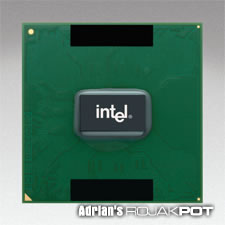Intel And The Centrino Mobile Technology

About two years ago, Intel released one of their biggest successes in the computing industry - the Banias mobile platform. Widely known to many of the general consumers as simply Centrino Mobile Technology, it has turned many heads with its innovations and ideas on how a mobile PC should be built.
Although it features a new processor that was lauded to be a radical new design made from ground up to be a mobile processor, the Centrino Mobile Technology isn't just a processor. Instead, it's a combination of a few technologies that enables a mobile PC that Intel claims "delivers outstanding mobile performance, great battery life, integrated wireless LAN capability and thin and light notebook designs."
And today, almost two years after Intel launched the Centrino Mobile Technology, it's time for Centrino to be recharged for the future. Today, we shall be looking at Intel's next generation Centrino Mobile Technology, which was codenamed Sonoma.
But before we go on and touch on Sonoma, let's take a quick overview of its predecessor - the Banias.
The Banias Platform
The Banias platform introduced a new microarchitecture - the Pentium M processor. It was built ground up specifically with mobile applications in mind. Therefore, it is able to provide excellent performance while maintaining a very low power consumption.
Banias processors run on a 400MHz Front Side Bus (FSB) and has an internal L2 cache size of 1MB. Coming in clock speeds from 1.30GHz to 1.70GHz, the Banias operated at only 1.356V with a thermal design power (TDP) of 24.5W. Best of all, due to its power saving design, it actually has an average power output of less than 1W!
As mentioned earlier, the Centrino Mobile Technology isn't just about the processor. It also comprises of an Intel chipset and wireless LAN adapter. The Banias mobile platform introduced the Intel 855PM and 855GM chipsets that was to interconnect the Pentium M processor with the rest of the components.
The Intel 855PM version allows the notebook manufacturer to install a discrete Graphic Processing Unit (GPU) of their choice while the Intel 855GM version comes integrated with Intel Extreme Graphics 2. Both chipsets support up to 2 GB of PC2100 DDR SDRAM.
And to complete the Centrino mobile technology, the notebook must come with the Intel PRO/Wireless 2100 WiFi module which supports the 802.11b protocol.
An Upgrade To The Banias
About a year later after the Banias was introduced, Intel released what was to be an upgrade to Centrino. They introduced the following three new components to the Centrino Mobile Platform :
- The new Pentium M processor (Dothan core)
- The Intel 855GME chipset
- A new dual mode Intel PRO/Wireless 2200BG WiFi module
The new Dothan processor improves on the Banias processor by increasing the internal L2 cache to a whooping 2MB. It also utilizes Intel's new 90nm process. The Dothans come in speed grades from 1.50GHz to 2.10GHz but still utilized the same old 400MHz Front Side Bus (FSB). It also boasts of enhancements to parts of the Banias micro-architecture like the Register Data Prefetcher and the Data Prefetcher. These enhancements improved performance while enabling the new Dothan processor to maintain a low power utilization.
The new Intel 855GME chipset introduced support for PC2700 DDR SDRAM. This was specifically intended for use in conjuction with the improved Intel Extreme Graphics 2 graphics circuitry. Running at a faster clock speed of 250MHz, the improved integrated graphics circuitry was claimed to be able to utilize the faster memory for improved performance.
And last but not least, Intel also introduced a new Intel PRO/Wireless 2200BG module, which supports both 802.11b and 802.11g wireless LAN standards.







 Add to Reddit
Add to Reddit

